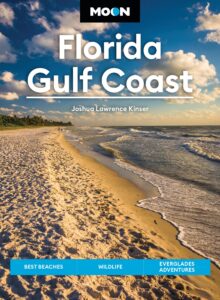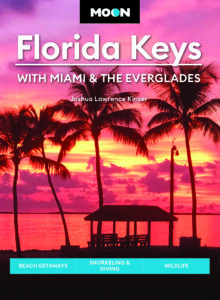Daytona Beach
Offering a heady barrage of blue-collar beach culture, Daytona Beach (pop. 68,866) is a classic road-trip destination in every way, shape, and form. The beach here is huge—more than 20 mi (32 km) long, and 500 ft (152 m) wide at low tide—and there’s a small and recently pretty scruffy amusement pier at the foot of Main Street. The rest of Daytona Beach is rather rough at the edges, with boarded-up shops and some lively bars and nightclubs filling the few blocks between the beach area and the Halifax River, which separates the beach from the rest of the town.
Besides being a living museum of pop culture, Daytona Beach has long played an important role in car culture: In the first decades of the 20th century, a real who’s who of international automotive pioneers—Henry Ford, R. E. Olds, Malford Duesenberg, and more—came here to test the upper limits of automotive performance. The first world land-speed record—a whopping 68 mph (109km/h)!—was set here in 1903, and by 1935 the ill-starred British racer Malcolm Campbell had raised it to 276 mph (445 km/h).
The speed racers later moved west to Bonneville Salt Flats in Utah, and Daytona became the breeding ground for stock car racing—today’s Daytona 500 started out as a series of 100- to 200-mile races around a rough 4-mi (6.4-km) oval, half on the sands and half on a paved frontage road. The circuit races, both for cars and motorcycles, really came into their own after World War II. In 1947, NASCAR was founded here as the nascent sport’s governing body. The races soon outgrew the sands, and in 1958 they were moved to the purpose-built Daytona International Speedway, on US-92 6 mi (9.6 km) west of the beach, right off I-95 exit 261A. Daytona offers “ride-alongs” and on-track driving experiences (for a mere $135 to $260).
It was at in Daytona that Jackie Robinson broke through baseball’s “color line,” taking part in the first desegregated professional ball game during Spring Training on March 17th, 1946. He played for the Triple-A Montreal Royals against their parent club, the Brooklyn Dodgers. The local stadium named in his honor, Jackie Robinson Ballpark (105 E. Orange Ave., 386/257-3172), hosts summer league Class A games for the Daytona Tortugas.
Daytona Beach is party central during March and April, when some 300,000 college kids escape from northern climes to defrost and unwind with a vengeance. There has been a concerted effort recently to keep a lid on things, but if you’re after peace and quiet, you should head somewhere else. The same is true of the springtime Bike Week before the Daytona 200 in March, and again in fall during Biketoberfest, when thousands of motorcycling enthusiasts descend on Daytona for a week or more of partying in between races at Daytona Speedway. The granddaddy of all stock car races, the Daytona 500, is held around Valentine’s Day, but getting one of the 101,000 tickets is all but impossible for casual fans.
A world apart from the spring break, biker, and race-car scenes, but just a block from the beach, the classic 1950s-themed Starlite Diner (401 N. Atlantic Ave., 386/301-5796) serves the expected range of breakfasts, burgers, and sandwiches. Daytona has a lot of low-rise motels as well as tons of high-rise hotels along the beachfront, like the large and spacious Holiday Inn (930 N. Atlantic Ave., 386/255-5494, $90 and up).
Related Travel Map
















